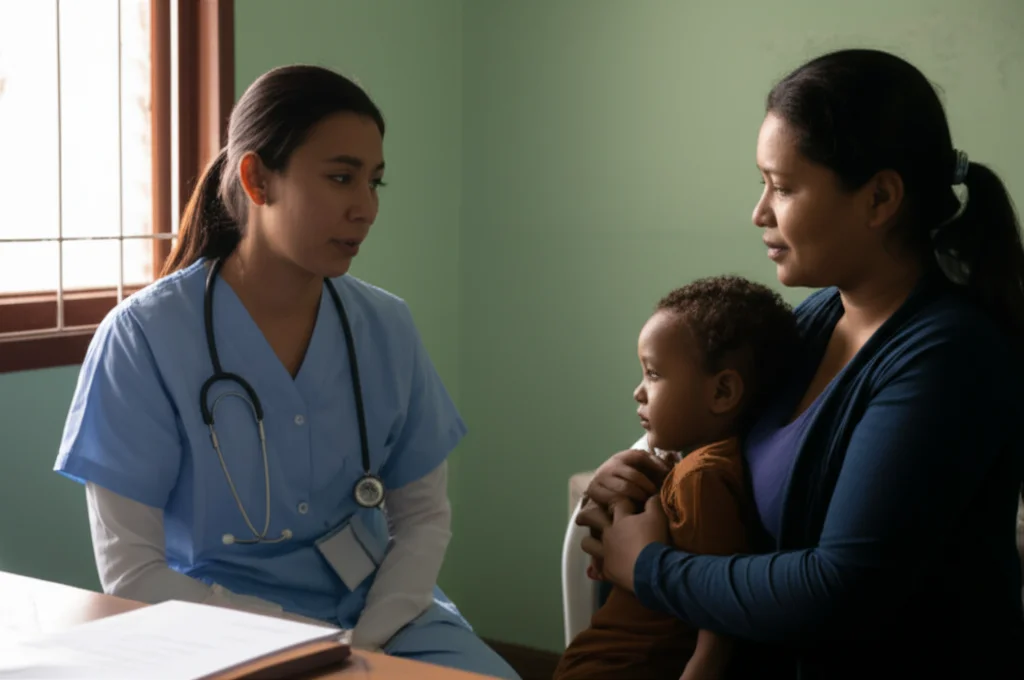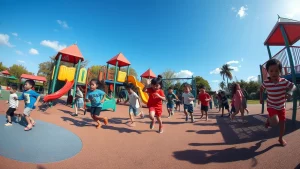Empowering Caregivers: Seeking Health in South Sudan
Hey there! Let’s chat about something super important: how families in places like South Sudan navigate the tricky world of child health, especially when malnutrition, or “wasting” as the pros call it, becomes a worry. I’ve been looking into a fascinating study that digs deep into this, focusing on a neat idea called the Family MUAC approach.
The Big Problem: Kids and Wasting
Okay, so picture this: kids under five are really vulnerable, right? And wasting – that severe weight loss thing that weakens them and makes them sick – is a huge threat. Honestly, it’s linked to over a third of child deaths globally. That’s a staggering number. And here’s the kicker: even though millions of kids suffer from it, a massive 80% of them don’t get the care they need. Why? Well, a big piece of the puzzle seems to be whether caregivers actually *seek* that care.
Studies, even from nearby places like Ethiopia and Kenya, point to things like not realizing how serious the illness is, or just how far away the nearest clinic is. When you don’t see the danger signs early, or if getting help is a major trek or costs money you don’t have, things get delayed. And delays mean kids often arrive at clinics much sicker, which, sadly, means poorer outcomes.
Enter the MUAC Tape: A Simple Tool
This is where the Family Mid-Upper Arm Circumference (MUAC) approach comes in. It’s a brilliant, simple strategy designed to spot wasting early, right in the community. The idea is to train caregivers – usually moms, but anyone looking after the child – to use a special, color-coded tape. It measures the circumference of the child’s upper arm. Green is good, yellow is a warning, and red means urgent help is needed. They also check for swelling (edema). This empowers families to become the first line of defense. It’s been around since 2012 in low- and middle-income countries, aiming to get more kids into treatment programs sooner.
What We Didn’t Know (Until Now)
Now, lots of research has shown that caregivers *can* learn to use these tapes accurately. That’s great! But here was the big question mark: just because they can measure, does that mean they *will* act on a worrying reading? What are the real-life hurdles and helpers when it comes to actually seeking care after spotting a problem with the tape? Most studies hadn’t really looked at the messy, human side of things – the feelings, the social stuff, the daily challenges. And that’s a crucial gap! Because knowing *if* someone is malnourished isn’t enough; they need to get *treatment*.
This study I’m talking about aimed to fill that exact gap. It wanted to explore all those barriers and facilitators – the things that make seeking care easier or harder – within a Family MUAC program in South Sudan.

How They Figured It Out
So, how did they do it? It was a “mixed-methods” study, which is a fancy way of saying they used both numbers (quantitative data) and stories (qualitative data) to get the full picture. They followed nearly 3,000 children aged 5 to 53 months and their caregivers in two different states in South Sudan: Central Equatoria (more urban) and Warrap (more rural).
Caregivers were trained on the MUAC tape and then followed for eight months. They had check-ins and surveys to see if they reported seeking care if their child showed signs of wasting. But the really cool part, for me, was the focus groups. They sat down with caregivers and just *talked*. Using a framework called the Health Belief Model (which helps understand why people do or don’t take health actions), they explored perceptions, fears, and motivations. This combo of numbers and conversations gives you such a richer understanding, you know? The numbers tell you *what* happened, and the stories tell you *why*.
What the Study Found: The Numbers
Okay, let’s look at the numbers first. Out of the children whose caregivers identified them as wasted using the MUAC tapes, a really encouraging 86.5% of caregivers reported seeking care. That’s pretty high! But there was a noticeable difference between the two areas: Warrap had a super high rate of 97.6%, while Central Equatoria was lower at 79.4%. This difference was statistically significant, meaning it wasn’t just random chance.
When asked *why* they didn’t seek care (among those who didn’t), the top reasons were familiar ones:
- Distance to health facilities (18.9%)
- Transportation costs (11.3%)
- Treatment costs (9.4%)
These are the practical, logistical hurdles that make getting help tough.
Digging Deeper: The Stories
Now, the qualitative part – the focus groups – added layers to this. Beyond the costs and distance, caregivers talked about other stuff that got in the way:
- Social stigma: People in the community might look down on you if your child is malnourished. Ouch.
- Lack of knowledge: Not even knowing *where* to go for help. This was a bigger issue in Central Equatoria.
- Negative experiences: Sadly, some had bad encounters with health workers – maybe feeling disrespected or turned away.
Despite these challenges, most caregivers really valued the MUAC tapes. They used them, often weekly, and felt confident in their ability to measure accurately. Even if neighbours or family members sometimes discouraged them, many felt motivated by their own desire to know their child’s status. One caregiver put it beautifully, saying she encouraged herself because she “want[s] to always know the status of my child.” That self-efficacy, that belief in their own ability to help their child, seems like a powerful driver.

Experiences at clinics varied. Many kids were admitted or treated, which is great. But the financial barrier came up again – some felt that if you didn’t have money, you wouldn’t get help. And yes, there were those upsetting stories of children being sent home even with concerning measurements, or health workers being less than compassionate.
Caregivers also talked about how they knew their child was sick or malnourished – things like diarrhea, vomiting, weakness, or not eating. The MUAC tape often confirmed their worries and spurred them to action, either by monitoring more closely or heading to a clinic. Some even used the tape alongside trying to give their child more food, which makes total sense! And the emotional weight of seeing a child unwell? That heartfelt commitment from families to make things better was clear.
So, What Helps and What Hurts?
This study really highlights that seeking care isn’t just about knowing *if* your child is malnourished; it’s wrapped up in a whole bunch of other things:
- Practical stuff: Distance, transport, cost. These are major, undeniable barriers.
- Social stuff: How the community views malnutrition, whether people encourage or discourage you, and how you’re treated by health staff. Stigma and disrespect can push people away.
- Personal stuff: The caregiver’s own knowledge, their confidence in using the MUAC tape, and their belief that seeking care will actually help.
- Context stuff: The differences between urban and rural life matter. Maybe urban caregivers face more time constraints (like competing work responsibilities), while rural ones face greater distances and transport issues.
It’s fascinating that even though Warrap had higher rates of severe hunger, Central Equatoria had a higher percentage of children who were wasted during the study period. The researchers hypothesize that urban life, while offering opportunities, might also bring unique risks, like older siblings looking after younger ones, potentially leading to poorer care practices.

Putting It All Together
This mixed-methods approach really pays off here. The numbers show us the overall picture – yes, most caregivers *do* seek care, but there are geographical differences and clear financial/logistical barriers. The stories fill in the gaps, showing us the human side: the fear of stigma, the frustration of not knowing where to go, the pain of negative interactions, and the powerful motivation of a parent wanting the best for their child.
It confirms that while the MUAC tape is a fantastic tool for *detection*, getting kids into *treatment* requires tackling a broader set of challenges. Financial issues are huge, especially when most people live on very little, and healthcare costs (even indirect ones like transport) can be crippling. The social environment, including the attitudes of health workers, also plays a critical role.
What Can We Do? Looking Ahead
So, what are the takeaways? How can we make things better? The study points to several promising areas:
- Address the money issue: Could Family MUAC programs link up with community savings groups? This might help families cover transport and treatment costs when needed.
- Tailor programs: Urban and rural areas have different vibes and different challenges. Programs need to be designed with these specific contexts in mind. Maybe training older siblings in urban areas is a good idea?
- Improve health services: Training health workers in compassionate, respectful care is essential. Caregivers are often vulnerable; positive interactions can build trust and encourage them to seek help sooner.
- Build on confidence: Caregivers already trust the MUAC tapes and their ability to use them. Let’s leverage that! Keep empowering them and reinforcing their crucial role.

Of course, like any study, this one had limitations. It relied on caregivers *reporting* seeking care, not necessarily confirming it with clinic records. And it was done in areas with existing programs, so the findings might not apply everywhere in South Sudan. But even with those caveats, it gives us vital insights.
The fact that caregivers value and use the tapes, even when facing discouragement, is a powerful starting point. By addressing the financial hurdles, tailoring support to local realities, and ensuring health services are welcoming and respectful, we can help make sure that early detection through Family MUAC truly translates into timely, life-saving treatment for children. It’s about empowering families *and* strengthening the system around them. A real team effort!
Source: Springer






